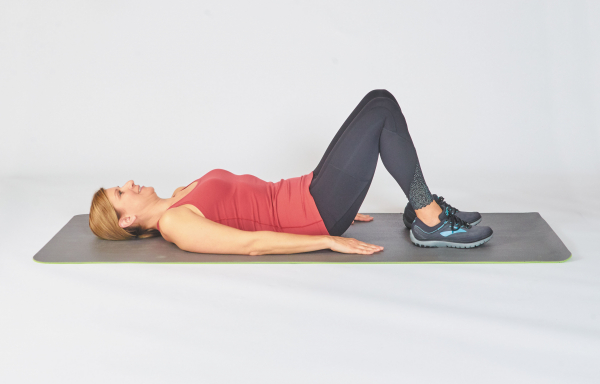
You may have noticed nipped-in, hourglass waists among women wearing the celebrity trend du jour: so-called waist trainers. This tummy-tucking shapewear evokes images of buttoned-up corsets and too-tight girdles from a dim past. But does it live up to the hype?
Splashy advertisements suggest these compression devices can help you selectively sculpt inches off your waistline by wearing them during workouts or as part of everyday routines. But the claims largely don’t live up to the evidence, says Michael Clem, a physical therapist with Spaulding Rehabilitation Network.
“People want the quick fix,” Clem says. “Putting something around our waist seems easy — we do it every day with pants and belts. What’s one more thing? Diet and exercise take longer and require more dramatic habit changes. We all know what we need to do, we just don’t want to do it.”
Debunking the hourglass hype
Clem debunks four common claims made about waist trainers — and points out one case where they may prove useful.
- Spot-reduce fat: Compressing fat with a waist trainer and expecting it to stay put once you uncinch the shapewear is a faulty concept. “Fat is a systemic deposit,” Clem says. “Putting something around your waist can’t help you burn the fat in just that place.”
- Sweat away the inches: Similarly, perspiring more profusely in one body area — in this case, under your waist trainer — will not melt fat there. “Sweat is a mechanism for cooling the body. We expend calories when we sweat but we can’t say those calories are going to come from the area we sweat from,” Clem notes.
- Eat less due to belly compression: While orthopedic braces or compression sleeves can heighten awareness of a body part, leading wearers to act differently, the same probably can’t be said of a thick band around the belly. Our awareness of internal organs isn’t as strong, Clem says. And while waist trainers apply pressure to the abdomen, they probably wouldn’t alter the body’s feeling of being full.
- Build a stronger core: Wearing a waist trainer might help if a doctor recommends temporary use after certain surgeries — such as while someone is rebuilding core muscles after a cesarean section, hernia surgery, or appendectomy — by offering tangible “feedback” on abdominal muscle use as a person recovers. “But there are much better ways to teach someone to feel their core,” says Clem, including working with a physical therapist on posture and breathing.
In most cases, there’s probably no harm in trying one of the shape-shifting devices, although anyone who is pregnant should not use them. And if you have any health issues, it’s best to talk to your doctor about whether compressing your core could have any negative effects, including not being able to breathe deeply and comfortably.
Want to shape your waist? Try core strengthening exercises
Listed from least to most challenging, here are three great exercises to strengthen core muscles that help define the waist. Start with one set and work up, paying attention to your form.
Bridge



Reps: 10
Sets: 1–3
Tempo: 3–1–3
Rest: 30–90 seconds between sets
Starting position: Lie on your back with your knees bent and feet flat on the floor, hip-width apart. Place your arms at your sides. Relax your shoulders against the floor.
Movement: Tighten your buttocks, then lift your hips up off the floor until they form a straight line with your knees and shoulders. Hold. Return to the starting position.
Tips and techniques:
- Tighten your buttocks before lifting.
- Keep your shoulders, hips, knees, and feet evenly aligned.
- Keep your shoulders down and relaxed into the floor.
Opposite arm and leg raise



Reps: 10
Sets: 1–3
Tempo: 3–1–3
Rest: 30–90 seconds between sets
Starting position: Kneel on all fours with your hands and knees directly aligned under your shoulders and hips. Keep your head and spine neutral.
Movement: Extend your left leg off the floor behind you while reaching out in front of you with your right arm. Keeping your hips and shoulders squared, try to bring that leg and arm parallel to the floor. Hold. Return to the starting position, then repeat with your right leg and left arm. This is one rep.
Tips and techniques:
- Keep your shoulders and hips squared to maintain alignment throughout.
- Keep your head and spine neutral.
- Think of pulling your hand and leg in opposite directions, lengthening your torso.
Stationary Lunge


Reps: 8-12 on each side
Sets: 1-3
Tempo: 3-1-3
Rest: 30-90 seconds between sets
Starting position: Stand up straight with your right foot one to two feet in front of your left foot, hands on your hips. Shift your weight forward and lift your left heel off the floor.
Movement: Bend your knees and lower your torso straight down until your right thigh is about parallel to the floor. Hold, then return to starting position. Finish all reps, then repeat with your left foot forward. This completes one set.
Tips and techniques:
- Keep your front knee directly over your ankle.
- In the lunge position, shoulder, hip, and rear knee should be aligned. Don’t lean forward or back.
- Keep your spine neutral and your shoulders down and back.
About the Author

Maureen Salamon, Executive Editor, Harvard Women's Health Watch
Maureen Salamon is executive editor of Harvard Women’s Health Watch. She began her career as a newspaper reporter and later covered health and medicine for a wide variety of websites, magazines, and hospitals. Her work has … See Full Bio View all posts by Maureen Salamon



